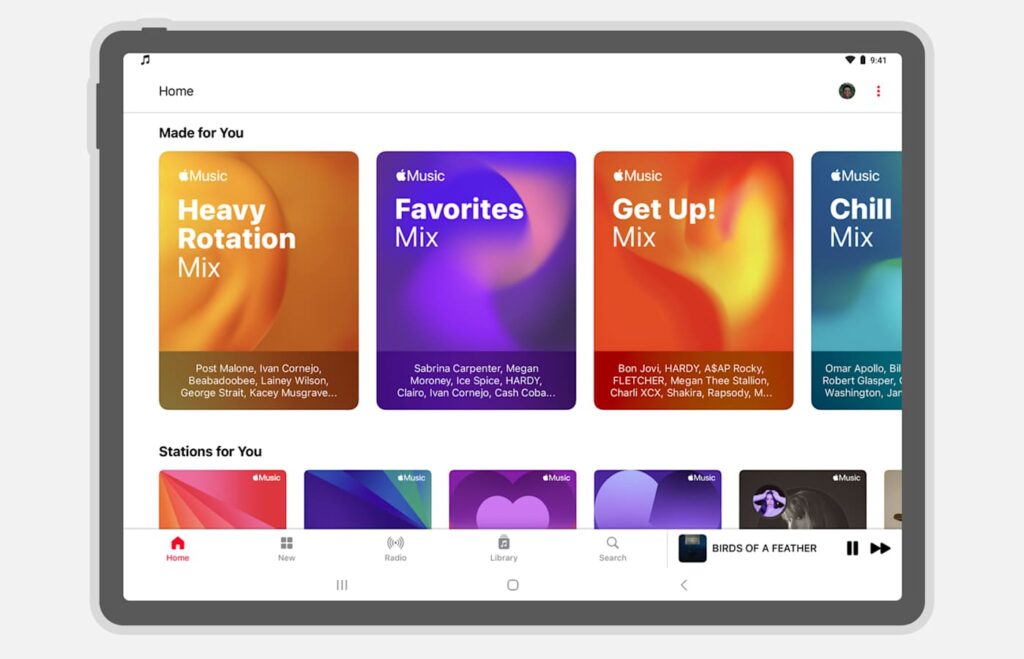
Apple has launched a beta version of Apple Music 5.0 for Android, introducing several new features aimed at enhancing user experience. As reported by 9to5Google, this update does not include the Liquid Glass redesign seen in its iOS 26 counterpart. Liquid Glass refers to Apple’s latest visual language, leaving uncertainty about whether the Android version will receive a similar aesthetic overhaul in the future.
While the redesign lacks the full visual update, it incorporates some elements from the iOS version. Users will notice new pill-shaped buttons for play, shuffle, and repeat positioned at the top of albums, playlists, and queued tracks. These replace the previous rectangular buttons with rounded corners, providing a more modern interface. Additionally, the app allows users to pin music to the top of their Library, offering easy access to their favorite artists, albums, playlists, or specific songs. Pinned content can also be set for automatic download on the device.
The Android version of Apple Music will feature a “lyrics translation and pronunciation guide,” which is powered by Apple Intelligence on iPhones. If the same live translation feature is utilized, it is likely to be supported by Google’s own AI technology on Android devices. Furthermore, users will have access to their monthly and yearly replay statistics directly within the app.
Despite these advancements, there is currently no confirmation regarding the inclusion of AutoMix, a significant feature introduced in the iOS 26 update. AutoMix enhances the listening experience with DJ-style transitions between tracks, blending the end of one song with the beginning of another through tempo adjustments and fading in elements like drums or bass loops.
The introduction of these features marks a notable step forward for Apple Music on Android, as the company seeks to enhance its appeal to a broader audience. With the continued competition in the music streaming market, these updates are essential for maintaining relevance among users who value both functionality and aesthetics in their applications.
As the beta version rolls out, users can expect further refinements based on feedback and usage data, potentially paving the way for more comprehensive updates in the future.







